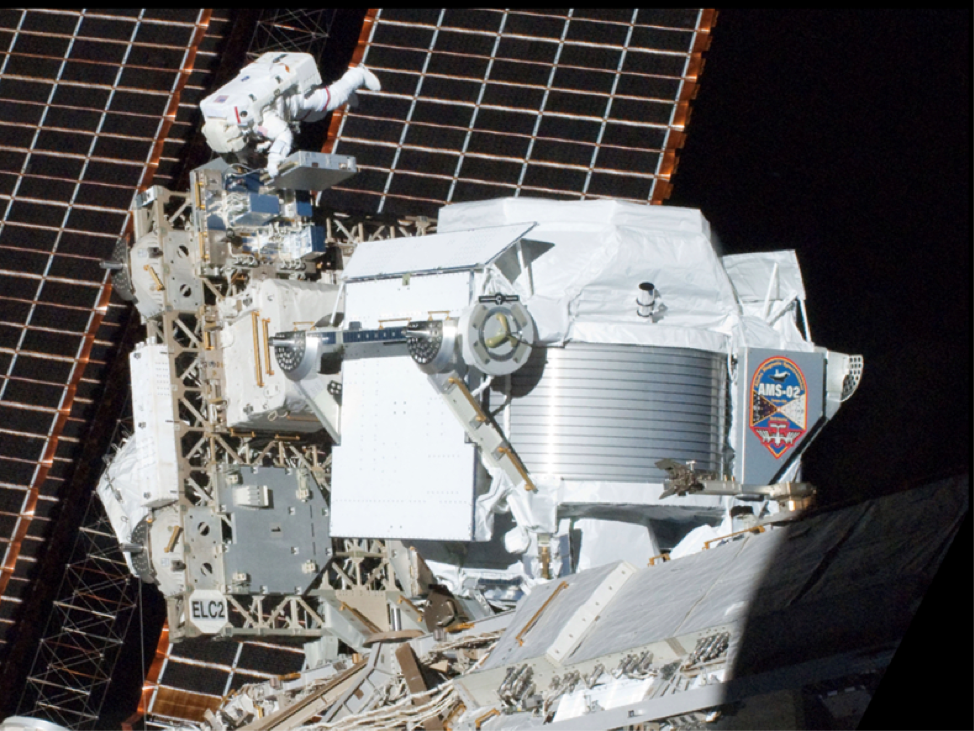The Alpha Magnetic Spectrometer, also designated AMS-02, is a particle physics experiment module that is mounted on the International Space Station (ISS). The experiment is a recognized CERN experiment. The module is a detector that measures antimatter in cosmic rays; this information is needed to understand the formation of the Universe and search for evidence of dark matter. The principal investigator is Nobel laureate particle physicist Samuel Ting. The launch of Space Shuttle Endeavour flight STS-134 carrying AMS-02 took place on 16 May 2011, and the spectrometer was installed on 19 May 2011. By April 15, 2015, AMS-02 had recorded over 60 billion cosmic ray events and 90 billion after five years of operation since its installation in May 2011.
In March 2013, Professor Ting reported initial results, saying that AMS had observed over 400,000 positrons, with the positron to electron fraction increasing from 10 GeV to 250 GeV. (Later results have shown a decrease in positron fraction at energies over about 275 GeV). There was "no significant variation over time, or any preferred incoming direction. These results are consistent with the positrons originating from the annihilation of dark matter particles in space, but not yet sufficiently conclusive to rule out other explanations." The results have been published in Physical Review Letters. Additional data are still being collected.
Credits:
http://www.nasa.gov/iss-science

No comments:
Post a Comment